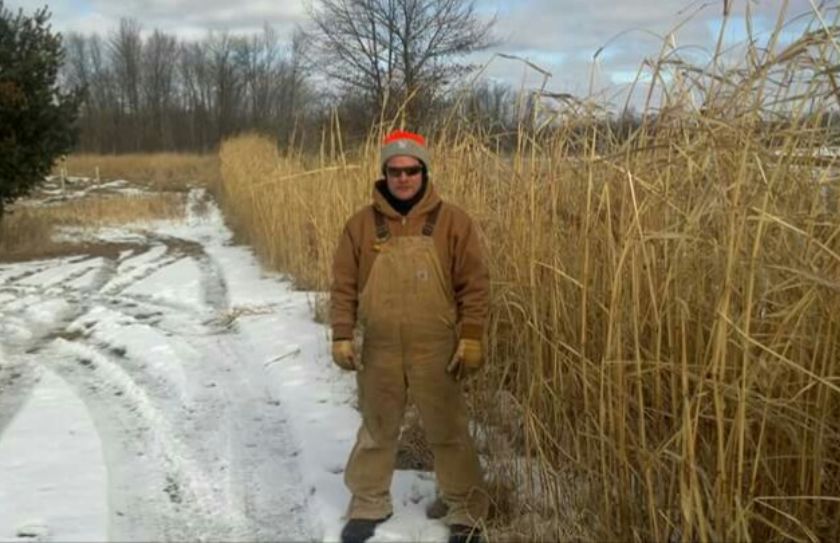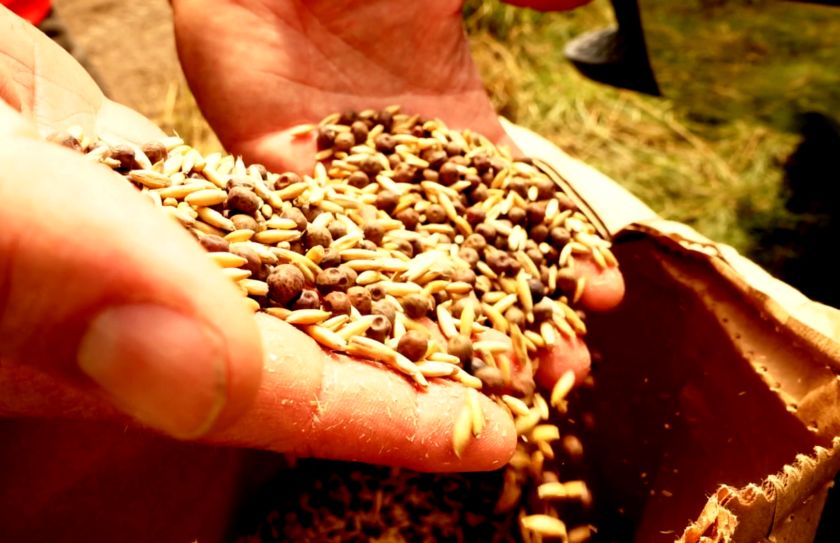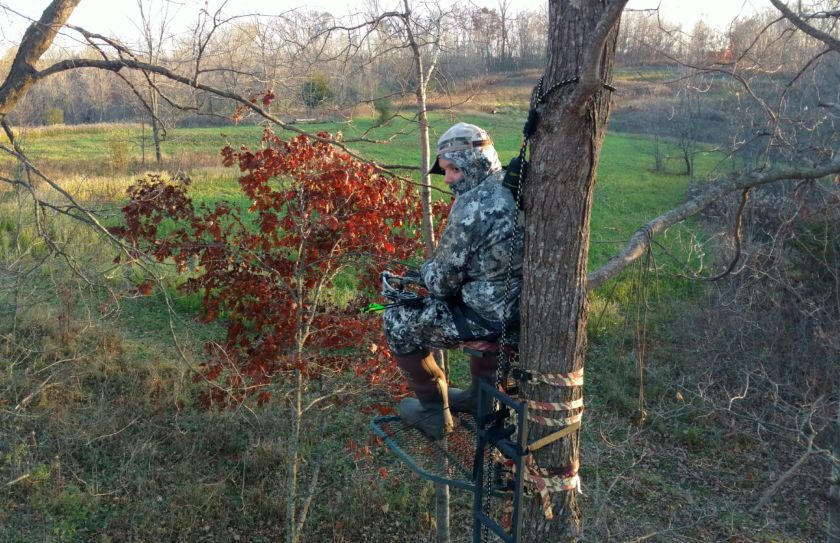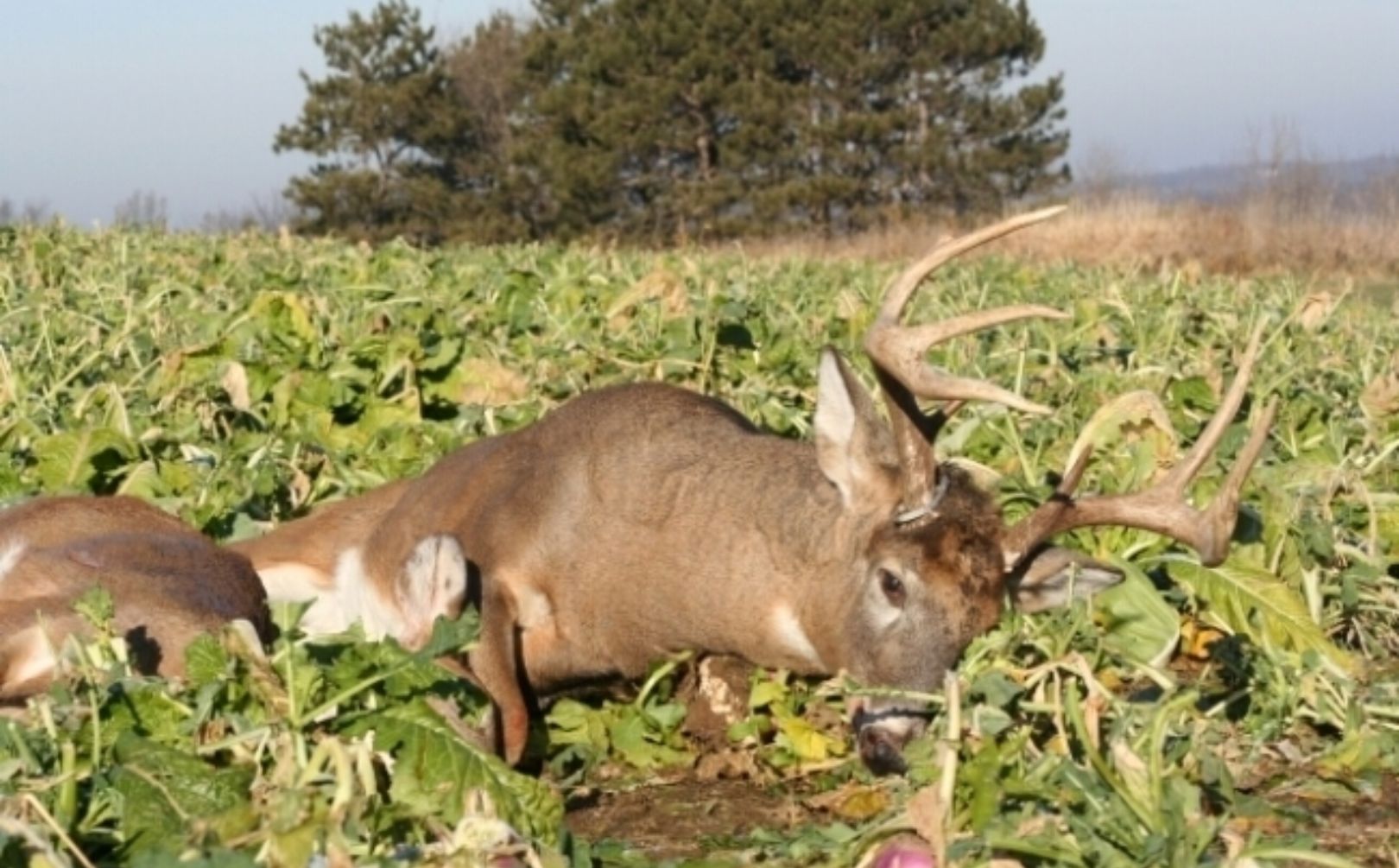
How do you think your food plot locations will do this season? Are you looking to improve the daytime attraction levels of your plots?
I invite you to check out these 4 advanced food plot location strategies, to make sure that you are getting the most out of all of your strategic food plot planting efforts:
The "Get a Soil Map" Myth
It has been many years since I can remember watching the hunting show on cable TV that gave the advice, "Get a soil map to determine the best location for your food plots". Even then I cringed because I learned nearly 20 years ago that poor soil should never get in the way of a good food plot location. What do I mean by that? Outside of major timber harvest, wetlands or excessively rocky planting conditions if a food plot needs to go "there", then it should be planted "there", regardess of if the soil is better on the other side of the parcel.
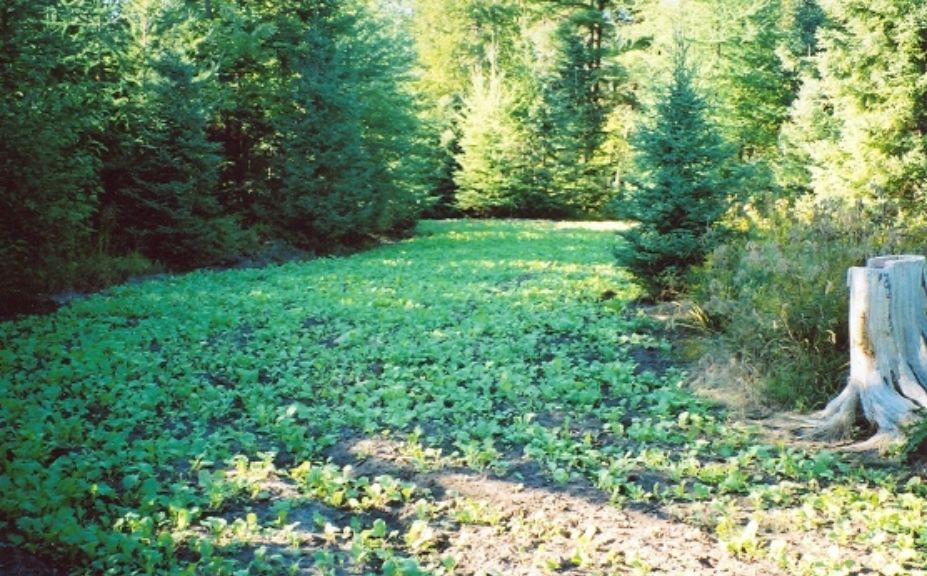
Food Plot Location Soil Tip:
You are much further ahead with a simple plot of lower quality forages planted on poor soil in the right location, than high quality forages planted on the best of soils in the wrong location. Make sure to read "Where To Plant Hunting Plots"for tips on exactly where to locate your hunting plots.
Hidden Food Plot Forages
When you walk onto your land to hunt, do you have to walk through any of your food plots? It may appear that the deer don't mind. The random does and fawns that sprint 50 yards, stop and then watch you walk by without bolting can be very deceiving! A mature buck takes less and less stress as he ages, however the doe herd stays relatively the same. Doe herds think, act and live in what I call "Herd Mentality" the entire year where as a mature buck is an independent thinker, capable of making his own decisions outside of the actions of the rest of the herd. A food source that you repeatedly walk through and disturb (whether that be by site, sound or scent) will create a ripple effect extending 200 yards or more into the adjacent cover. Within that establish "high stress zone" the deer, including mature bucks become to expect your intrusions and plan accordingly. How do they plan? By the distance they bed away from the food source!
*For your complete guide to advanced food plot strategies make sure to check out my 2nd book, titled "Food Plot Success By Design".
Because does can tolerate the least amount of stress, they bed the closest to the food source. But bucks typically bed behind the doe herd, alone and away from the stress within a pattern of behavior that is only reinforced as that specific mature buck ages. A great way for you to scout this behavior is to first take a look at your major food sources within an ariel photo, and to block off 100 yards in any direction that a mature buck would bed, and up to 300 yards or more from high human traffic food sources. In low cover ag regions where deer become accustomed to packing tightly within limited cover options the distance is much closer. But, in remote wilderness settings that high stress zone could extend to a 1/2 mile or more from a major food source. That high stress zone is the area where you can expect a mature buck not to bed within, and as he ages I have experienced often that he will actually relocate-or at least attempt to relocate.
Food Plot Location Hidden Tip:
Hiding a smaller, low quality forage plot is better than exposing a larger, high quality foage plot to your hunting access.
Food Plot Sanctuary
If the deer are hidden from your access while feeding on your plots, then it pays to keep it that way! Although I do enjoy hunting on small food sources that lead to major food sources, very few of my hunting sits are actually over a food plot while archery hunting. My oldest bucks have all been harvested with a bow well away from food sources, even though those food plot locations were critical to those successful hunts. One very important question that you can ask yourself is this: "Do the deer on the land I hunt, view my food plots as a safe an area to spend their time during the daylight hours as their bedding areas?". If you are answer is no than whether you shrink the plots, relocate them or change your access there are several things that you can do to make sure that you don't create a major high stress zone around your plots.
Food Plot Location Sanctuary Tip:
The local deer herd needs to view your food plots as just as safe a place to spend their time as their most secure of daytime bedding areas. Not every " sanctuary" is really a sanctuary. To make sure that you are attracting more deer to your land than your repel, you will enjoy taking a look at "Strategies for Creating a Deer Sanctuary".
Definition of Travel
Food plots can hurt your efforts as much as they can help you, or possibly even more. If deer are exposed to your access and you create a major high stress zone that extends off of your land you could possibly be better off not having the food source in the first place. I have experiened many times over that a single small parcel of 100 acres or less can actually reduce the overall buck age structure in an entire area by creatinga high-stress pinball game of repel and attraction. But being exposed to your access is only a part of a potential problem. Deer also need to be aligned in an adventageous pattern of movement as well! Here a few general food plot location strategies to make it much easier on yourself when it comes to getting the most out of your habitat and hunting efforts:
1. Food sources located on our borders are typically a pretty poor choice if your neighbors land holds quality cover. Allowing your neighbor to house the deer that feed on your land leaves you with very few hours to potentially hunt those deer. It also helps your neighbor's efforts out more than your own. Access becomes problimatic as well with border plots, often forcing your to enter the heart of your land to avoid spooking deer on the food plot.
2. Food plots can be the end of a movement from mature buck bedding to doe bedding to staging area to food source, or even a small portion of the interior of that same movement in the form of long travel plots or small hunting plots, but no location should be random. Attempt to control the majority of the movement on your own land, back and forth, in a daily and boringly consistent movement from bedding to feeding.
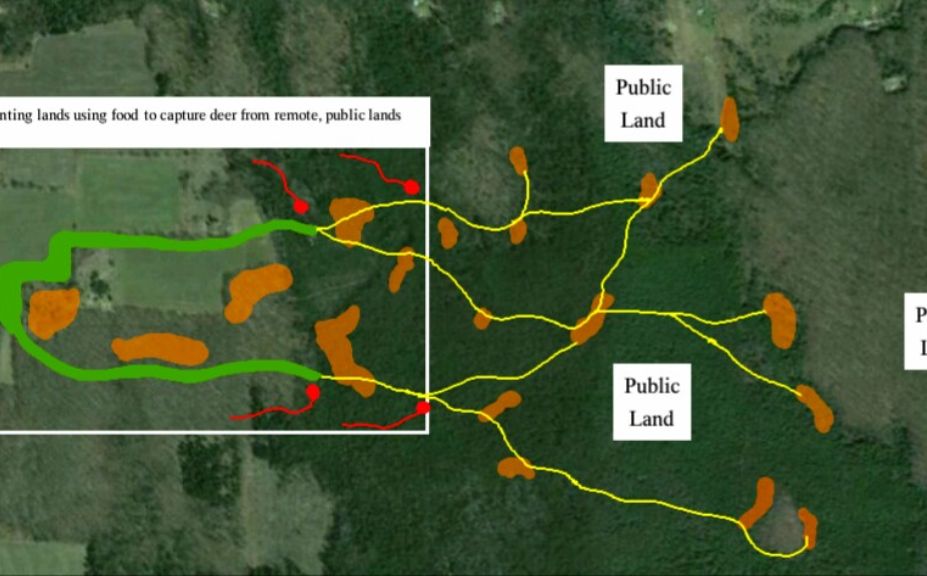
Food Plot Location Travel Tip:
Make sure of where the deer are pointing while using your food plots. Are the deer pointed off of your land, into your land, into your access? Are your food plots working as part of the movement, or against the movement? No food plot location should be random, always complimenting the man-made or natural flow of deer movement that best suits the land, your hunting style and habitat. Do you need to attract deer from deep within neighboring lands? Than you will need to check out my "Long Distance Food Plot Attraction Guide".
Conclusion
It's snowing and cold right now, but it is certainly not too early to plan your food plot locations on the land that you manage and hunt. A food plot is a "trap" for the local deer herd. Do you lay a trap that increases the amount of times that deer are exposed to your hunting activities, or reduces the frequency of deer/human encounters? I encourage you to create habitat and hunting improvements on your land that gives you the opportunity to sneak around your land like a predator. A food plot location can greatly assist you...or doom you to failure. It pays to plant early!
